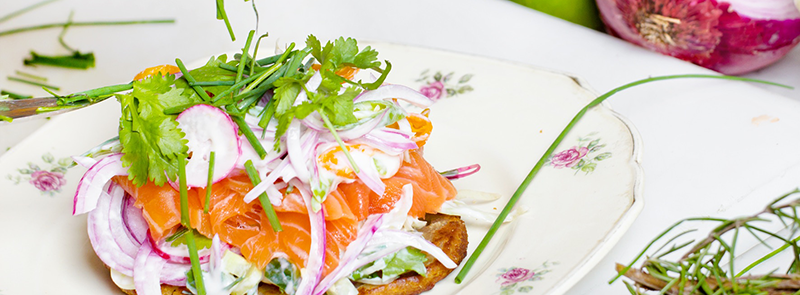How to Remove Harmful Chemicals From Your Body Through Detoxification

In the USA, an estimated 2000 new chemicals are introduced into foods and consumer products every year, many of which have not been tested for negative health effects1. How your body gets rid of a substance depends on the particular chemical2. The liver, kidneys, gastrointestinal system, skin, and lungs all play a role in helping your body get rid of unwanted substances3.
Foreign chemicals that are not easily removed by the body include POPS (persistent organic pollutants) and some metals. Studies on POPs have linked them with endocrine disruption, cardiovascular disease, neurological and developmental defects, metabolic diseases, and cancer. The USA, EU, and Australia have been steadily banning POPs since the 1970s4,5,6. The levels of POPs in the ecosystem have been gradually declining since their prohibition, but they have not been completely eradicated7. Currently, there is no scientific consensus as to whether current exposure levels to POPs are detrimental to human health8, but it’s better to be safe than sorry!
POPs are just one of many chemicals out there that could be bad for your health. This information is not meant to scare you, but to educate and inform you.
Choosing healthy, natural foods can help you remove toxins from your body, improve your overall health, and balance your energy.
Certain foods and nutritional components have been scientifically proven to help you detoxify your body along with many other health benefits. Detoxification is the body’s way of getting rid of foreign molecules that we pick up from the air we breathe, food and water we consume, and medications we take, as well as toxins the body generates in normal bodily processes. A buildup of toxins not only contributes to poor overall health and low energy, but it may also increase risk of certain diseases, such as obesity and cancer9.

There is scientific evidence that:
- malic acid (found in grapes and wine)
- citric acid (found in citrus fruits)
- succinic acid (found in apples and blueberries)
- citrus pectin (found in the peel and pulp of citrus fruits)
- chlorella (a type of green algae)
have natural chelating properties, meaning they can be useful for the elimination of toxic metals10,11,12,13,14,15.
Citric and succinic acid help reduce aluminum levels in the bones (which are the main storage sites of aluminum)10. Chlorella is a unicellular green alga that has been shown to assist with metal detoxification11,12,13,14,15. It has also been shown to eliminate some POPs16,17,18.
Eating cruciferous vegetables can help with detoxification. Cruciferous vegetables – such as broccoli, Brussels sprouts, cauliflower, and cabbage19– can help increase glutathione levels. Glutathione is the most powerful antioxidant in our bodies, and it’s profoundly involved in detoxification9. Cruciferous vegetables are also important sources of phytonutrients and important dietary sources of many essential nutrients like vitamins A, C, and E. These phytonutrients help maintain cellular redox balance using phase II detoxification and antioxidant enzymes19. Increasing consumption of cruciferous vegetables has been associated with a decreased risk of several degenerative and chronic diseases, including cardiovascular disease20,21,22,23,24,25,26 and certain cancers27,28,29,30,31,32,33.

Commercial detox diets rarely identify the specific toxins they aim to remove or how they remove those toxins, making it very difficult to investigate their claims34. According to WebMD, the only type of detox diet that is worthwhile is one that limits processed, high-fat, and sugary foods, and replaces them with more whole foods like fruits and vegetables35. According to Sheila Dean, Dsc, Rd, you don’t necessarily need a special detox diet – everyone benefits from supporting the body’s detoxification processes through good nutrition9. According to Marsha McCulloch, RD, you should avoid detox plans that eliminate most food groups, especially for more than a few days. Nutrient deficiencies can interfere with detoxification and can starve out helpful gut bacteria9.
Here are some of McCulloch’s recommendations on what to eat for natural detox support:
- Whole organic foods – the fewer chemicals you take in from pesticides, chemical additives, and other food contaminants, the less your liver has to detoxify
- Garlic and onions – these and other allium family vegetables contain phytonutrients that support detoxification
- Flavonoids – these natural plant nutrients in citrus fruits, berries, and green tea increase the activity of liver detoxification enzymes
- Fiber – roughage in beans, whole grains, vegetables, fruits, and nuts helps reduce absorption of toxins and helps sweep them out through the digestive tract
- Greens – cruciferous and leafy vegetables contain special components that support detoxification
- Spices – herbs and spices, such as rosemary, cilantro, and turmeric supply antioxidants and trigger the liver to make more enzymes needed in detoxification
- Probiotics – foods such as yogurt and kefir that supply beneficial gut bacteria help keep down toxins produced by harmful bacteria
- Water – water helps flush out toxins through urine and sweat
In short, natural fruits and vegetables are great for helping your body eliminate toxins, and have many other proven health benefits.
References:
1. About the National Toxicology Program. (2016, May 25). National Toxicology Program.
2. Sears ME & Genuis SJ. (2012). Environmental determinants of chronic disease and medical approaches: recognition, avoidance, supportive therapy, and detoxification. J Environ Public Health 2012, 356798.
3. Anzenbacher P & Anzenbacherova E. (2001). Cytochromes P450 and metabolism of xenobiotics. Cell Mol Life Sci 58, 737–747.
4. Jones KC & De Voogt P. (1999). Persistent organic pollutants (POPs): state of the science. Environ Pollut 100, 209–221.
5. Porta M & Zumeta E. (2002). Implementing the Stockholm treaty on persistent organic pollutants. Occup Environ Med 59, 651–652.
6. Ruzzin J, Lee D-H, Carpenter DO et al., (2012). Reconsidering metabolic diseases: the impacts of persistent organic pollutants. Atherosclerosis 224, 1–3.
7. Solomon GM & Weiss PM. (2002). Chemical contaminants in breast milk: time trends and regional variability. Environ Health Perspect 110, A339–A347.
8. Damstra T, Page SW, Herrman JL et al., (2002). Persistent organic pollutants: potential health effects? J Epidemiol Community Health 56, 824–825.
9. McCulloch, Marsha. "Enhance natural detox defense with a plant-rich diet: sound dietary strategies--a plant-based diet and minimal food toxins--can help boost your body's natural detoxification defenses." Environmental Nutrition Apr. 2015: 7.
10. Domingo JL, Gomez M, Llobet JM et al., (1988). Citric, malic and succinic acids as possible alternatives to deferoxamine in aluminum toxicity. J Toxicol Clin Toxicol 26, 67–79.
11. Huang Z, Li L, Huang G et al., (2009). Growth-inhibitory and metal-binding proteins in Chlorella vulgaris exposed to cadmium or zinc. Aquat Toxicol 91, 54–61.
12. Uchikawa T, Ueno T, Hasegawa T et al., (2009). Parachlorella beijerinkii accelerates lead excretion in mice. Toxicol Ind Health 25,551–556.
13. Uchikawa T, Yasutake A, Kumamoto Y et al., (2010). The influence of Parachlorella beyerinckii CK-5 on the absorption and excretion of methylmercury (MeHg) in mice. J Toxicol Sci 35, 101–105.
14. Uchikawa T, Kumamoto Y, Maruyama I et al., (2011). The enhanced elimination of tissue methylmercury in Parachlorella beijerinckii-fed mice. J Toxicol Sci 36, 121–126.
15. Yoshida N, Ishii K, Okuno T et al., (2006). Purification and characterization of cadmium-binding protein from unicelluar algaChlorella sorokiniana. Curr Microbiol 52, 460–463.
16.Takekoshi H, Suzuki G, Chubachi H et al., (2005). Effect of Chlorella pyrenoidosa on fecal excretion and liver accumulation of polychlorinated dibenzo-p-dioxin in mice. Chemosphere 59, 297–304.
17.Morita K, Matsueda T, Iida T et al., (1999). Chlorella accelerates dioxin excretion in rats. J Nutr 129, 1731–1736.
18.Morita K, Ogata M & Hasegawa T (2001). Chlorophyll derived from Chlorella inhibits dioxin absorption from the gastrointestinal tract and accelerates dioxin excretion in rats. Environ Health Perspect 109, 289–294.
19.Boddupalli, S., Mein, J., Lakkanna, S., & James, D. (2012). Induction of Phase 2 Antioxidant Enzymes by Broccoli Sulforaphane: Perspectives in Maintaining the Antioxidant Activity of Vitamins A, C, and E. Frontiers in Genetics, 3, Frontiers in Genetics, 2012, Vol.3.
20.Law M. R., Wald N. J., Thompson S. G. (1994). By how much and how quickly does reduction in serum cholesterol concentration lower risk of ischaemic heart disease? BMJ 308, 367–372.
21.Joshipura K. J., Ascherio A., Manson J. E., Stampfer M. J., Rimm E. B., Speizer F. E., Hennekens C. H., Spiegelman D., Willett W. C. (1999). Fruit and vegetable intake in relation to risk of ischemic stroke. JAMA 282, 1233–1239.
22.Suido H., Tanaka T., Tabei T., Takeuchi A., Okita M., Kishimoto T., Kasayama S., Higashino K. (2002). A mixed green vegetable and fruit beverage decreased the serum level of low-density lipoprotein cholesterol in hypercholesterolemic patients. J. Agric. Food Chem. 50, 3346–3350.
23.Takai M., Suido H., Tanaka T., Kotani M., Fujita A., Takeuchi A., Makino T., Sumikawa K., Origasa H., Tsuji K., Nakashima M. (2003). LDL-cholesterol-lowering effect of a mixed green vegetable and fruit beverage containing broccoli and cabbage in hypercholesterolemic subjects. Rinsho Byori 51, 1073–1083.
24.Cornelis M. C., El-Sohemy A., Campos H. (2007). GSTT1 genotype modifies the association between cruciferous vegetable intake and the risk of myocardial infarction. Am. J. Clin. Nutr. 86, 752–758.
25.Mirmiran P., Noori N., Zavareh M. B., Azizi F. (2009). Fruit and vegetable consumption and risk factors for cardiovascular disease. Metabolism 58, 460–468.
26.Zhang X., Shu X. O., Xiang Y. B., Yang G., Li H., Gao J., Cai H., Gao Y. T., Zheng W. (2011). Cruciferous vegetable consumption is associated with a reduced risk of total and cardiovascular disease mortality. Am. J. Clin. Nutr.94, 240–246.
27.Verhoeven D. T., Goldbohm R. A., Van Poppel G., Verhagen H., Van Den Brandt P. A. (1996). Epidemiological studies on Brassica vegetables and cancer risk. Cancer Epidemiol. Biomarkers Prev. 5, 733–748.
28.Feskanich D., Ziegler R. G., Michaud D. S., Giovannucci E. L., Speizer F. E., Willett W. C., Colditz G. A. (2000). Prospective study of fruit and vegetable consumption and risk of lung cancer among men and women. J. Natl. Cancer Inst. 92, 1812–1823.
29.Voorrips L. E., Goldbohm R. A., Van Poppel G., Sturmans F., Hermus R. J., Van Den Brandt P. A. (2000). Vegetable and fruit consumption and risks of colon and rectal cancer in a prospective cohort study: The Netherlands Cohort Study on Diet and Cancer. Am. J. Epidemiol. 152, 1081–1092.
30.Neuhouser M. L., Patterson R. E., Thornquist M. D., Omenn G. S., King I. B., Goodman G. E. (2003). Fruits and vegetables are associated with lower lung cancer risk only in the placebo arm of the beta-carotene and retinol efficacy trial (CARET). Cancer Epidemiol. Biomarkers Prev. 12, 350–358.
31.Ambrosone C. B., Mccann S. E., Freudenheim J. L., Marshall J. R., Zhang Y., Shields P. G. (2004). Breast cancer risk in premenopausal women is inversely associated with consumption of broccoli, a source of isothiocyanates, but is not modified by GST genotype. J. Nutr. 134, 1134–1138.
32.Miller A. B., Altenburg H. P., Bueno-De-Mesquita B., Boshuizen H. C., Agudo A., Berrino F., Gram I. T., Janson L., Linseisen J., Overvad K., Rasmuson T., Vineis P., Lukanova A., Allen N., Amiano P., Barricarte A., Berglund G., Boeing H., Clavel-Chapelon F., Day N. E., Hallmans G., Lund E., Martinez C., Navarro C., Palli D., Panico S., Peeters P. H., Quiros J. R., Tjonneland A., Tumino R., Trichopoulou A., Trichopoulos D., Slimani N., Riboli E. (2004). Fruits and vegetables and lung cancer: findings from the European Prospective Investigation into Cancer and Nutrition. Int. J. Cancer 108, 269–276.
33.Fowke J. H., Morrow J. D., Motley S., Bostick R. M., Ness R. M. (2006). Brassica vegetable consumption reduces urinary F2-isoprostane levels independent of micronutrient intake. Carcinogenesis 27, 2096–2102.
34.Klein, A., & Kiat, H. (2015). Detox diets for toxin elimination and weight management: A critical review of the evidence.Journal of Human Nutrition and Dietetics : The Official Journal of the British Dietetic Association, 28(6), 675-86.
35.Zelman, K. M. (2016, March 8). Detox diets: Do they work? Are they healthy? WebMD.
